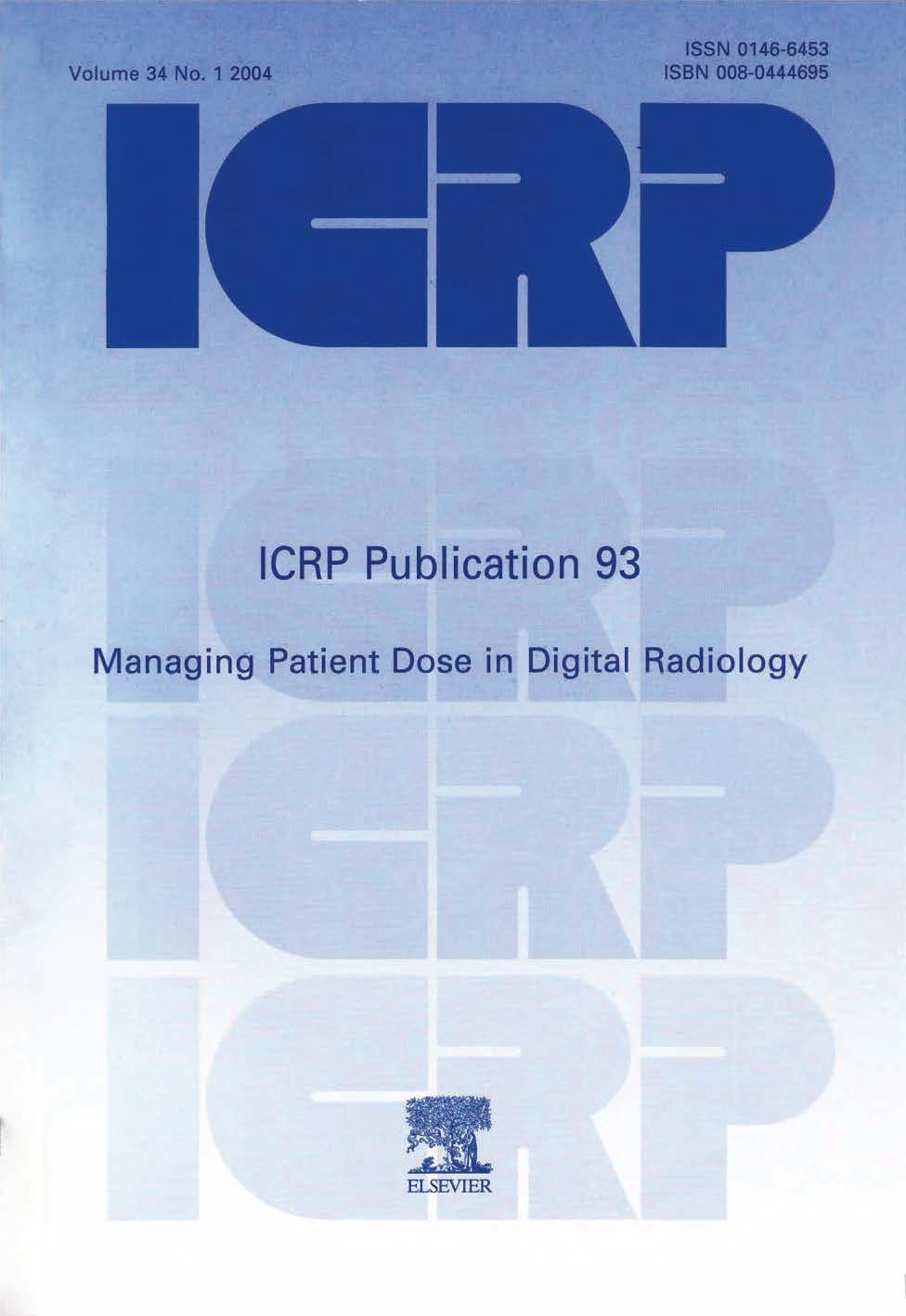ICRP Publication 93
Managing Patient Dose in Digital Radiology
Recommended citation
ICRP, 2004. Managing Patient Dose in Digital Radiology. ICRP Publication 93. Ann. ICRP 34 (1).
Abstract - Digital techniques have the potential to improve the practice of radiology but they also risk the overuse of radiation. The main advantages of digital imaging, i.e. wide dynamic range, post processing, multiple viewing options, and electronic transfer and archiving possibilities, are clear but overexposures can occur without an adverse impact on image quality. In conventional radiography, excessive exposure produces a black film. In digital systems, good images are obtained for a large range of doses. It is very easy to obtain (and delete) images with digital fluoroscopy systems, and there may be a tendency to obtain more images than necessary.
In digital radiology, higher patient dose usually means improved image quality, so a tendency to use higher patient doses than necessary could occur. Different medical imaging tasks require different levels of image quality, and doses that have no additional benefit for the clinical purpose should be avoided.
Image quality can be compromised by inappropriate levels of data compression and/or post processing techniques. All these new challenges should be part of the optimisation process and should be included in clinical and technical protocols.
Local diagnostic reference levels should be re-evaluated for digital imaging, and patient dose parameters should be displayed at the operator console. Frequent patient dose audits should occur when digital techniques are introduced. Training in the management of image quality and patient dose in digital radiology is necessary. Digital radiology will involve new regulations and invoke new challenges for practitioners. As digital images are easier to obtain and transmit, the justification criteria should be reinforced.
Commissioning of digital systems should involve clinical specialists, medical physicists, and radiographers to ensure that imaging capability and radiation dose management are integrated. Quality control requires new procedures and protocols (visualisation, transmission, and archiving of the images).
ICRP, 2004. Managing Patient Dose in Digital Radiology. ICRP Publication 93. Ann. ICRP 34 (1).
Abstract - Digital techniques have the potential to improve the practice of radiology but they also risk the overuse of radiation. The main advantages of digital imaging, i.e. wide dynamic range, post processing, multiple viewing options, and electronic transfer and archiving possibilities, are clear but overexposures can occur without an adverse impact on image quality. In conventional radiography, excessive exposure produces a black film. In digital systems, good images are obtained for a large range of doses. It is very easy to obtain (and delete) images with digital fluoroscopy systems, and there may be a tendency to obtain more images than necessary.
In digital radiology, higher patient dose usually means improved image quality, so a tendency to use higher patient doses than necessary could occur. Different medical imaging tasks require different levels of image quality, and doses that have no additional benefit for the clinical purpose should be avoided.
Image quality can be compromised by inappropriate levels of data compression and/or post processing techniques. All these new challenges should be part of the optimisation process and should be included in clinical and technical protocols.
Local diagnostic reference levels should be re-evaluated for digital imaging, and patient dose parameters should be displayed at the operator console. Frequent patient dose audits should occur when digital techniques are introduced. Training in the management of image quality and patient dose in digital radiology is necessary. Digital radiology will involve new regulations and invoke new challenges for practitioners. As digital images are easier to obtain and transmit, the justification criteria should be reinforced.
Commissioning of digital systems should involve clinical specialists, medical physicists, and radiographers to ensure that imaging capability and radiation dose management are integrated. Quality control requires new procedures and protocols (visualisation, transmission, and archiving of the images).
Download PDF
한국어 (Korean)
Español (Spanish)
Educational Material (Spanish)
Translations
日本語 (Japanese)한국어 (Korean)
Español (Spanish)
Other Resources
Educational MaterialEducational Material (Spanish)
